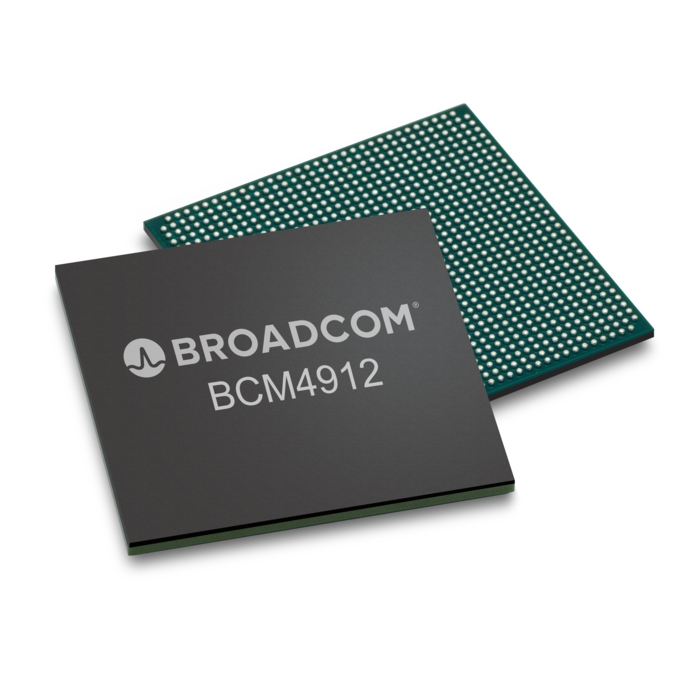Spc
Regular Contributor
Hey everyone,
I am testing out new 2.5Gbit/s links.
I am using RT-AX86U with latest merlin and jumbo frames are enabled, however firmware does not specify how big are jumbo frames, are they 9k ? or 16k ?
USB dongle from ASUS i am using is ASUS usb-c2500, which supports 16k jumbo frames:

Asus USB-C2500 also supports 16k jumbo frames in linux:

ASUS usb-c2500:
RT-AX86U uses:
If i check with ifconfig all interfaces are 1500 bytes, no sign of 9000 bytes:
I have enabled jumbo frames in UI:

Does anyone know if merlin caps jumbo frames to max 9k or can we get more than 9k ?
Thanks.
I am testing out new 2.5Gbit/s links.
I am using RT-AX86U with latest merlin and jumbo frames are enabled, however firmware does not specify how big are jumbo frames, are they 9k ? or 16k ?
USB dongle from ASUS i am using is ASUS usb-c2500, which supports 16k jumbo frames:
Asus USB-C2500 also supports 16k jumbo frames in linux:
ASUS usb-c2500:
| Chip1 | Realtek RTL8156B |
|---|
RT-AX86U uses:
| ETH chip3 | Realtek RTL8226B |
|---|
If i check with ifconfig all interfaces are 1500 bytes, no sign of 9000 bytes:
Code:
bond0 Link encap:Ethernet HWaddr FC:34:97:8B:5E:C8
UP BROADCAST RUNNING ALLMULTI MASTER MULTICAST MTU:1500 Metric:1
RX packets:10175872 errors:0 dropped:2729 overruns:0 frame:0
TX packets:2754910 errors:0 dropped:461 overruns:0 carrier:0
collisions:0 txqueuelen:0
RX bytes:13013747984 (12.1 GiB) TX bytes:497796580 (474.7 MiB)
br0 Link encap:Ethernet HWaddr FC:34:97:8B:5E:C8
inet addr:192.168.0.35 Bcast:192.168.0.255 Mask:255.255.255.0
UP BROADCAST RUNNING ALLMULTI MULTICAST MTU:1500 Metric:1
RX packets:647988 errors:0 dropped:32530 overruns:0 frame:0
TX packets:4290 errors:0 dropped:0 overruns:0 carrier:0
collisions:0 txqueuelen:0
RX bytes:50536958 (48.1 MiB) TX bytes:1018450 (994.5 KiB)
eth0 Link encap:Ethernet HWaddr FC:34:97:8B:5E:C8
UP BROADCAST ALLMULTI MULTICAST MTU:1500 Metric:1
RX packets:0 errors:0 dropped:0 overruns:0 frame:0
TX packets:0 errors:0 dropped:0 overruns:0 carrier:0
collisions:0 txqueuelen:1000
RX bytes:0 (0.0 B) TX bytes:0 (0.0 B)
eth1 Link encap:Ethernet HWaddr FC:34:97:8B:5E:C8
UP BROADCAST ALLMULTI MULTICAST MTU:1500 Metric:1
RX packets:0 errors:0 dropped:0 overruns:0 frame:0
TX packets:0 errors:0 dropped:0 overruns:0 carrier:0
collisions:0 txqueuelen:1000
RX bytes:0 (0.0 B) TX bytes:0 (0.0 B)
eth2 Link encap:Ethernet HWaddr FC:34:97:8B:5E:C8
UP BROADCAST ALLMULTI MULTICAST MTU:1500 Metric:1
RX packets:0 errors:0 dropped:0 overruns:0 frame:0
TX packets:0 errors:0 dropped:0 overruns:0 carrier:0
collisions:0 txqueuelen:1000
RX bytes:0 (0.0 B) TX bytes:0 (0.0 B)
eth3 Link encap:Ethernet HWaddr FC:34:97:8B:5E:C8
UP BROADCAST RUNNING ALLMULTI SLAVE MULTICAST MTU:1500 Metric:1
RX packets:6498690 errors:0 dropped:24 overruns:0 frame:0
TX packets:2618277 errors:0 dropped:457 overruns:0 carrier:0
collisions:0 txqueuelen:1000
RX bytes:8161966918 (7.6 GiB) TX bytes:473784848 (451.8 MiB)
eth4 Link encap:Ethernet HWaddr FC:34:97:8B:5E:C8
UP BROADCAST RUNNING ALLMULTI SLAVE MULTICAST MTU:1500 Metric:1
RX packets:3677182 errors:0 dropped:58 overruns:0 frame:0
TX packets:136633 errors:0 dropped:0 overruns:0 carrier:0
collisions:0 txqueuelen:1000
RX bytes:4851781066 (4.5 GiB) TX bytes:24011732 (22.8 MiB)
eth5 Link encap:Ethernet HWaddr FC:34:97:8B:5E:C8
UP BROADCAST RUNNING ALLMULTI MULTICAST MTU:1500 Metric:1
RX packets:2046568 errors:0 dropped:0 overruns:0 frame:0
TX packets:7991081 errors:0 dropped:0 overruns:0 carrier:0
collisions:0 txqueuelen:1000
RX bytes:190780625 (181.9 MiB) TX bytes:10145018265 (9.4 GiB)
eth6 Link encap:Ethernet HWaddr FC:34:97:8B:5E:C8
UP BROADCAST RUNNING ALLMULTI MULTICAST MTU:1500 Metric:1
RX packets:6666 errors:0 dropped:0 overruns:0 frame:332272
TX packets:584446 errors:48 dropped:0 overruns:0 carrier:0
collisions:0 txqueuelen:1000
RX bytes:1369515 (1.3 MiB) TX bytes:64432145 (61.4 MiB)
Interrupt:48
eth7 Link encap:Ethernet HWaddr FC:34:97:8B:5E:CC
UP BROADCAST RUNNING ALLMULTI MULTICAST MTU:1500 Metric:1
RX packets:193668 errors:0 dropped:21 overruns:0 frame:0
TX packets:916936 errors:0 dropped:17574 overruns:0 carrier:0
collisions:0 txqueuelen:1000
RX bytes:36115988 (34.4 MiB) TX bytes:443933244 (423.3 MiB)
lo Link encap:Local Loopback
inet addr:127.0.0.1 Mask:255.0.0.0
UP LOOPBACK RUNNING MULTICAST MTU:65536 Metric:1
RX packets:122205 errors:0 dropped:0 overruns:0 frame:0
TX packets:122205 errors:0 dropped:0 overruns:0 carrier:0
collisions:0 txqueuelen:0
RX bytes:27457103 (26.1 MiB) TX bytes:27457103 (26.1 MiB)
lo:0 Link encap:Local Loopback
inet addr:127.0.1.1 Mask:255.0.0.0
UP LOOPBACK RUNNING MULTICAST MTU:65536 Metric:1
spu_ds_dummy Link encap:UNSPEC HWaddr 00-00-00-00-00-00-00-00-00-00-00-00-00-00-00-00
UP RUNNING NOARP MTU:1500 Metric:1
RX packets:0 errors:0 dropped:0 overruns:0 frame:0
TX packets:0 errors:0 dropped:0 overruns:0 carrier:0
collisions:0 txqueuelen:100
RX bytes:0 (0.0 B) TX bytes:0 (0.0 B)
spu_us_dummy Link encap:UNSPEC HWaddr 00-00-00-00-00-00-00-00-00-00-00-00-00-00-00-00
UP RUNNING NOARP MTU:1500 Metric:1
RX packets:0 errors:0 dropped:0 overruns:0 frame:0
TX packets:0 errors:0 dropped:0 overruns:0 carrier:0
collisions:0 txqueuelen:100
RX bytes:0 (0.0 B) TX bytes:0 (0.0 B)I have enabled jumbo frames in UI:
Does anyone know if merlin caps jumbo frames to max 9k or can we get more than 9k ?
Thanks.
Last edited:


